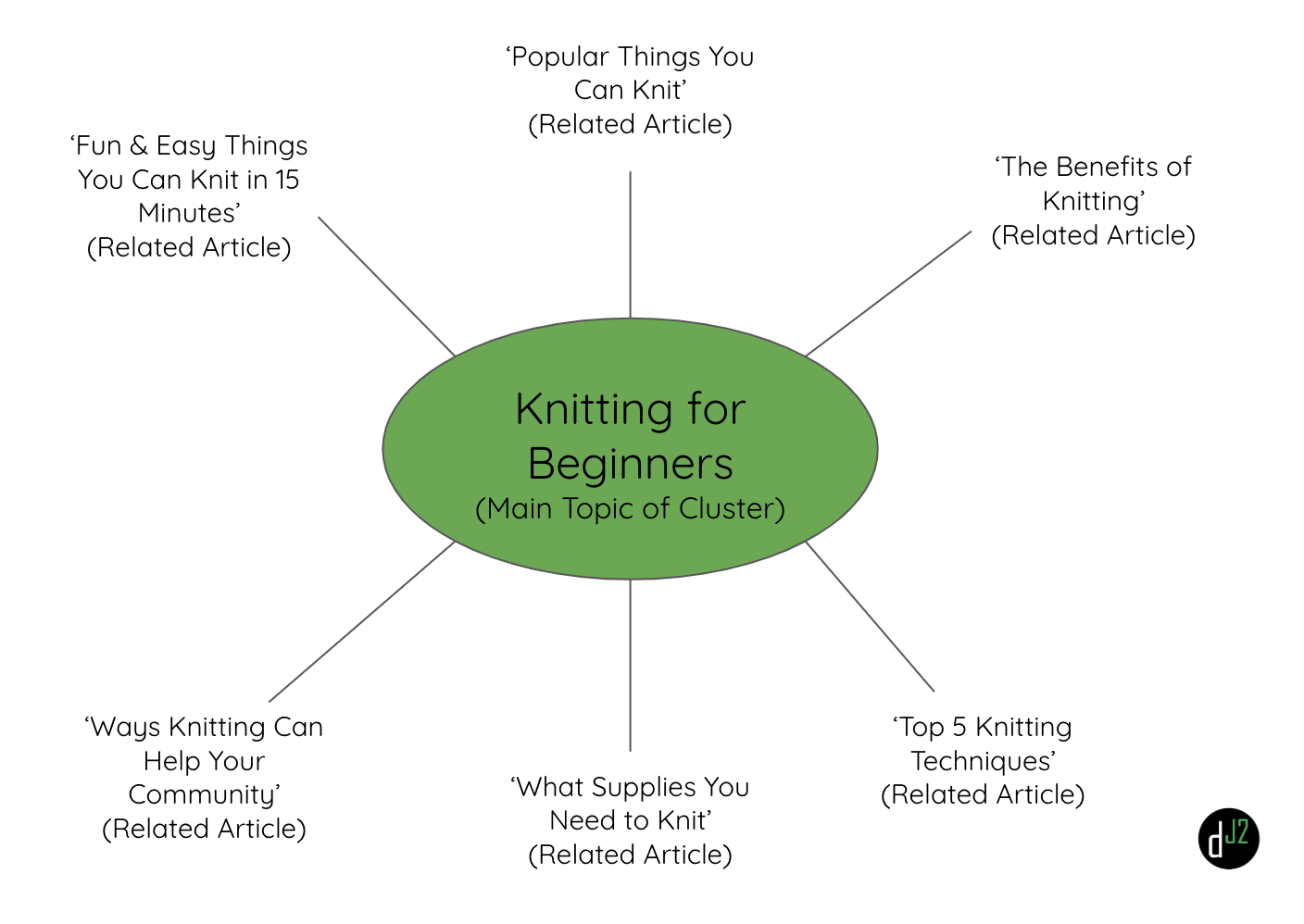
As technology continues to optimize and improve, it’s important to change with the times. Everyone wants to have the best SEO, but so few go about doing it correctly.
With search engines continually changing to better the user experience, being the first listed gets harder and harder. That’s why content calendars and long-term content planning is out — the knight in shining armor to replace it: topic clustering.
Topic clustering, when done right, can help increase your site’s traffic, increase visibility, boost your SEO, and help you maintain a relevant and strategic content plan.
“That all sounds great, Colleen, but how the heck am I supposed to do that?!”
Well, I’ve broken it into four steps to creating and maintaining successful topic clustering: define your topics, create catchy headlines, content linking, and continual cluster refinement. We’ll dive into each of these four steps, but first, let’s take a moment to define what topic clustering is.
What is Topic Clustering?
To accurately define topic clustering, let’s break it out into ‘topic’ and ‘cluster.’ First, is when you focus on a specific topic instead of an individual keyword and build out a cluster of 8-12 blogs based on that particular topic.
HubSpot does a great job explaining what topic clustering is and how it’s become useful for businesses.
How Do I Use Topic Clustering Successfully?
This will be through four key steps we mentioned earlier. Let’s dive into what each of these looks like.
Step 1: Define Your Topics
Your topics should be something that a common and popular professional would be searching for. What can help is if you get your team together at once and brainstorm ideas of topics that are common within your industry.
You can think about common questions your sales teams are asked and what topic surrounds those questions or maybe things you’ve found yourself searching for on the internet or clicking on while on a social media platform.
The format should look like this: Main Topic of the Cluster → Supporting Article - Supporting Article - Supporting Article - Supporting Article.
Using the example of knitting as our main topic, below is what it could look like as it begins to take form.

Take time to write out what topics you want to cover and even add a quick blurb about the topic and why it was chosen to be written about.
Step 2: Create Catchy Headlines
Once you have your topics sorted and chosen the 1-2 you want to move forward with, it’s time to get creative!
Think about different blog article headlines you could use that would capture someone’s attention while maintaining relevance to the popular topic you chose.
These headlines should be catchy yet concise. Let someone know what to expect if they click to read your article; otherwise, you will have a high bounce rate (which is bad for SEO).
Headlines are a vital piece of the puzzle to gaining traffic and increasing SEO, so take the time to write a good one. And remember, when you’re brainstorming, whether alone or in a group, no idea is a bad one!
Write every idea down, and once the creativity fountain runs dry, then take the time to narrow the list down. Sometimes two separate, mediocre headlines put together creates one perfect, attention-grabbing headline.
Step 3: Content Linking
An important step in the process is that once you have outlined your pillar page and supporting content pieces as well as written them, you will need to add hyperlinks between them to successfully create a linked topic cluster.
Not only will this be good for SEO to have internal links, but it’s an essential part to successful topic clustering. To have them all linked to different blog articles as well as linked in the pillar page, you’re encouraging readers to engage with your content more and have a higher chance to be shown more on Google.
Step 4: Cluster Refinement
An important thing to remember with topic clustering is to make sure you don’t plan too far ahead. Feel free to jot down as many topics as you want, but only take time to build out the clusters one at a time.
The big point of topic clustering is its ability to reach buyers based on what they’re searching and in today’s day and age, that changes so frequently that sticking to a strict calendar no longer works.
This means that after each topic cluster, take the time to see what worked, what didn’t work, what inquiries you got based on the blogs and any other related topics you could try from there.
Make sure to wait until after your topic cluster is complete. Pivoting mid-cluster is not ideal since it doesn’t give your content a chance to thrive, so make sure to stick to the topic you’ve chosen. But also use those results to fuel your growth and learn from the successes and failures.
Benefits to Topic Clustering
You may be wondering, ‘If I do all four steps and work hard to create great content that is based around a relevant, popular topic, what kind of results can I expect?’
First, by carefully and strategically selecting topics based around what your buyers are searching for, you’re able to narrow in on specific topics and establish yourself as an expert. It shows a commitment to the topic and can help build out your list of subscribers. People want to learn from experts, so if you take the time to become one on specific topics, people will listen.
Second, when you create a topic cluster, all of the content created around the topic will relate. This means tons of internal linking, which is a real win for SEO. This will help with individual blog SERP since they all belong to the same cluster.
Third, and final, when you research what topics that are common within your industry that buyers are searching for, you will not only have answers for them as experts, but you’ll have related products/services that could help those readers. These blog articles are an incredible opportunity to get your product/service in front of those who may be a good fit and in the early stages of the buyer’s journey.
Final Thoughts
Once topic clustering becomes part of your content creation routine, it will flow naturally. At first, it may be tough to get started or too easy to get ahead of yourself.
The key to successful topic clustering is two-fold: as mentioned many times above, always make sure you are sticking to fresh, relevant, and researched topics. But it’s also imperative to do your own thing and to stay unique.
When your company started, it wasn’t started on the basis that they wanted to be like everyone else. The owner of your business felt they could do something different and better for the world and people looking for your product/service.
Make sure to keep that mentality in mind as you go about creating your content. Sure, the topics should be based on what is relevant and popular, but your answer doesn’t have to be cookie-cutter.
Even if you’re saying the same information people have heard or other companies explain, try to phrase it in a fresh, different, and exciting way.
I mean, think about it. How many articles are on the web about topic clustering? Tons. Did that stop me from writing a blog about it? No. Because the way I phrase it and the way I see topic clustering is a little different than others. And I’m hopeful that the way I chose to explain this helps others as it’s helped my agency.
With this mentality combined with strategic topic clustering, every content creator is unstoppable.
Happy writing!




-3.jpeg?width=352&name=7%20Ways%20to%20Promote%20Your%20Blog%20(And%20Increase%20Traffic)-3.jpeg)


